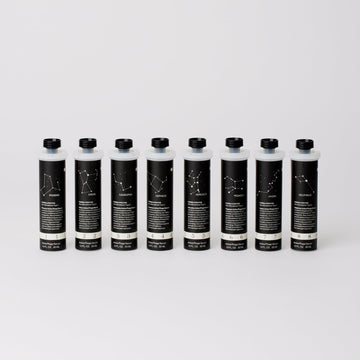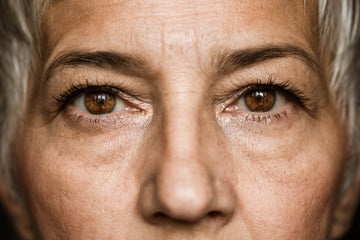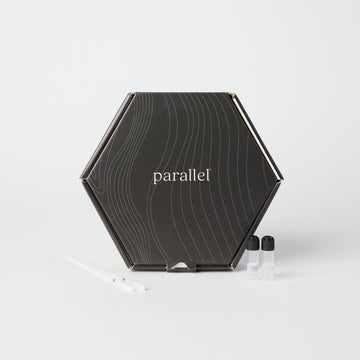“What if your breakouts are about more than just hormones?”
While hormones are a well-known trigger for acne, there’s more to the story. Your skin’s microbiome–a complex community of bacteria and microorganisms– is also playing a critical role. When hormones surge, they can disrupt the balance of these microbes, allowing acne-causing bacteria to thrive. So, tackling hormonal acne might be less about controlling oil and more about restoring balance to your skin’s delicate ecosystem. Here’s how the skin microbiome and hormones work together—and sometimes, against your skin.
How Hormones Affect Skin
Hormonal fluctuations, especially around menstruation, pregnancy, and puberty, often cause a spike in androgens like testosterone. This hormonal surge signals the sebaceous glands to produce more sebum, leading to increased oiliness in the skin. This excess oil creates a perfect environment for clogged pores and acne formation.
But it’s not just about oil production. Hormones can also impact other factors of skin health, including inflammation and moisture balance, which makes the skin more vulnerable to bacterial overgrowth. By understanding how these hormonal shifts affect your skin, you can manage your skin microbiome and control breakouts more easily.
The Role of the Skin Microbiome
Your skin isn’t just a barrier that protects your body from the outside world– it’s home to trillions of microorganisms, making up what is known as the skin microbiome. This ecosystem includes beneficial bacteria, fungi, and even viruses that help protect your skin and maintain its overall health. When your skin’s microbiome is balanced, these microbes work together to keep your skin healthy by blocking harmful bacteria, like Cutibacterium acnes, from proliferating and causing inflammation. It also strengthens your skin’s barrier, retaining moisture, and regulates immune responses to prevent redness, inflammation, and acne.
However, hormonal fluctuations can throw this delicate balance off. When your quality and quantity of sebum change due to hormonal surges, it can feed C. acnes and other acne-causing bacteria, allowing them to thrive and disrupt the balance of your skin’s ecosystem. This leads to an overgrowth of harmful bacteria and decrease of beneficial bacteria, which also leads to a weakening of your skin’s defenses. Essentially, your microbiome loses its diversity and stability, opening the door for more frequent and severe acne flare-ups.
Hormonal acne is commonly found along the chin, jawline, and cheeks, areas rich in sebaceous glands that are heavily influenced by both hormones and microbial changes.
Solutions for Balancing the Skin Microbiome
To tackle hormonal acne effectively, it’s important to go beyond just surface treatments. Here are some well-researched methods that can help restore the delicate balance of your skin microbiome and support healthier, clearer skin:
Prebiotics
Prebiotics are ingredients that feed the beneficial bacteria already present on your skin, helping them to thrive. By nourishing the good bacteria, prebiotics support a healthier, more balanced skin microbiome. Natural prebiotic ingredients, such as chicory root or radish root ferment, can be found in many skincare products, including Parallel’s Blue Biotic™ Multi-Effect Peptide Cream.
Gentle cleansers
Harsh cleansers can strip away the skin’s natural oils and disrupt the microbiome. Instead, opt for pH-balanced, gentle cleansers like Parallel’s Holy Calming Cleanser that clean without disturbing your skin’s ecosystem. Additionally, avoid over-exfoliating, as this can damage the barrier and lead to microbiome imbalance.
Topical probiotics
Probiotics are beneficial bacteria that can help restore microbial balance. They work by introducing beneficial bacteria to the skin, helping to crowd out harmful bacteria and reduce inflammation. Studies have shown that incorporating probiotic-rich skincare products, such as creams and serums with live cultures, can promote a healthier skin environment. Again, Parallel’s Blue Biotic™ Multi-Effect Peptide Cream and Skin Barrier Silk Cream both contain probiotics to support your skin microbiome.
Dietary adjustments
A healthy diet plays an essential role in maintaining your skin’s microbiome. Research shows that reducing sugar and refined carbohydrates can help manage acne. Incorporating more fiber, healthy fats, and antioxidant-rich foods can improve both gut and skin health, which are closely connected.
Phage therapy
Phage therapy is a compelling treatment to balance the skin microbiome. Bacteriophages (nanomicrobes that infect and kill specific bacteria) target harmful bacteria, like C. acnes, without disrupting the beneficial bacteria. This targeted approach can support the reduction of breakouts and other skin conditions linked to bacterial imbalances. Research suggests that phages are especially a breakthrough for people with consistent acne who do not respond well to conventional treatments.
Parallel Health’s Skin Microbiome Test
For a truly personalized approach, Parallel Health’s MD-03 Protocol™ offers a custom skin microbiome test that identifies the specific pathogenic bacteria causing your hormonal acne, provides a detailed skin health report with clinical guidance, and offers a monthly Custom Active Phage Serum that targets your pathogenic bacteria. With this approach, you can restore your microbiome’s balance and take control of your skin health.
Hormonal acne can be frustrating, but understanding your skin microbiome unlocks new hope for managing breakouts. By focusing on solutions that restore microbial balance, you can target the root cause of hormonal acne and maintain clearer, healthier skin.



























